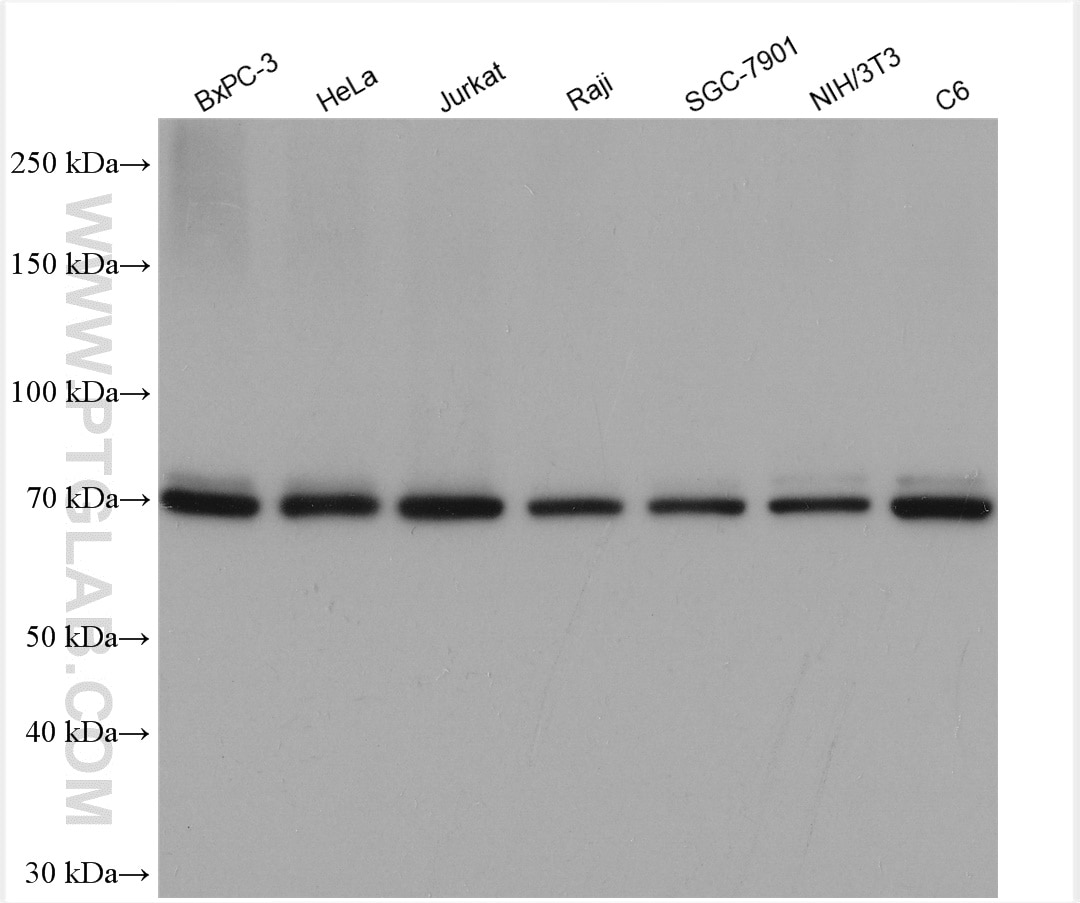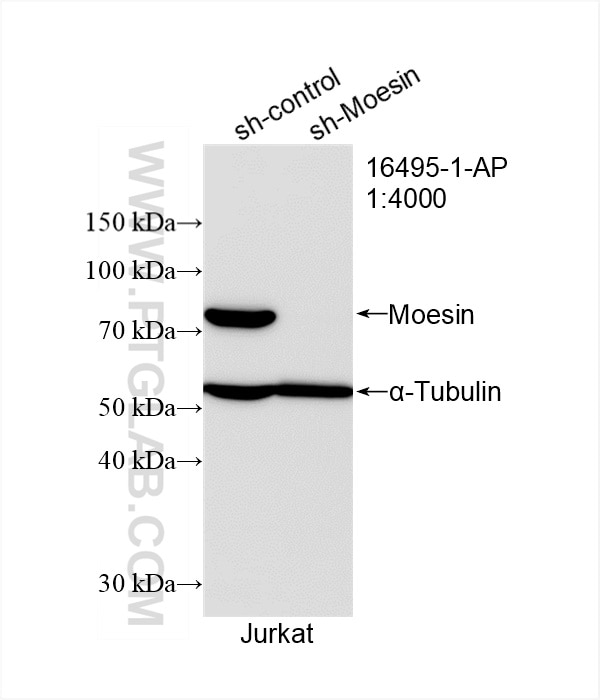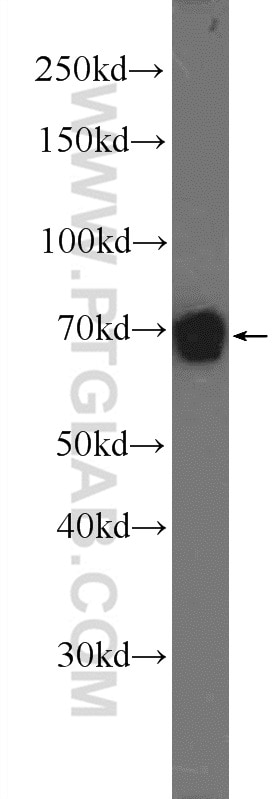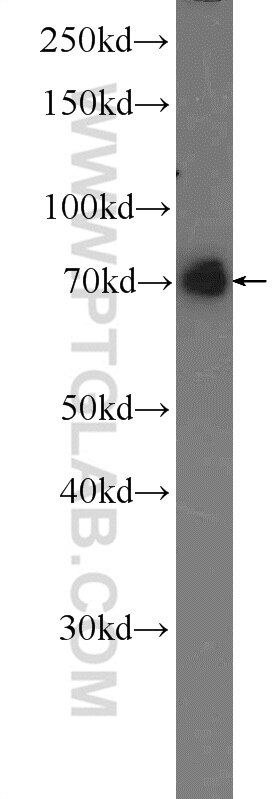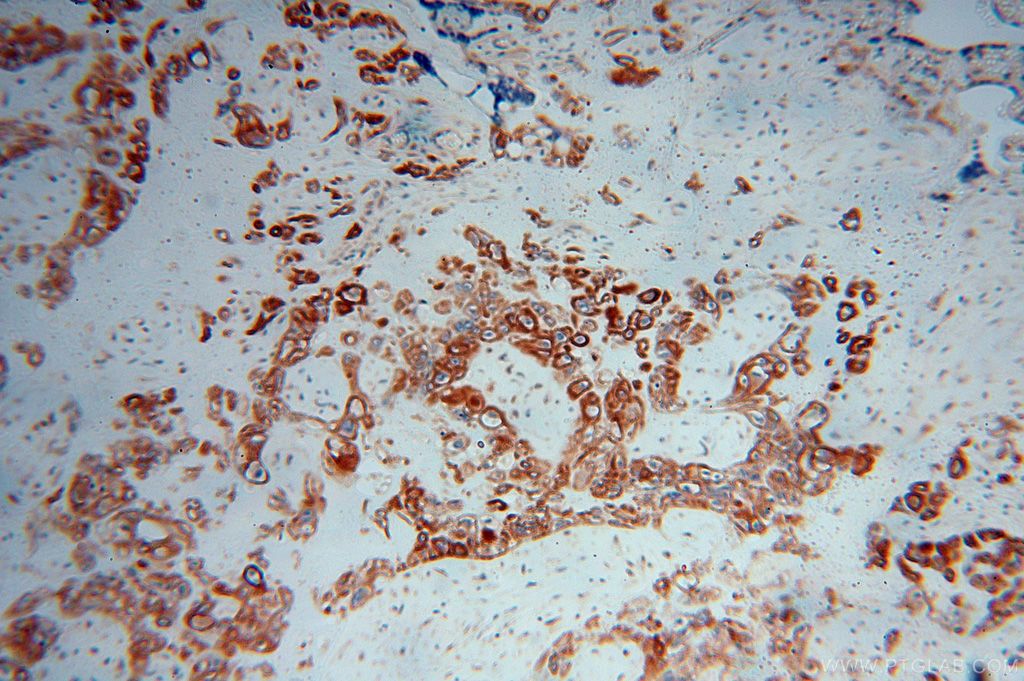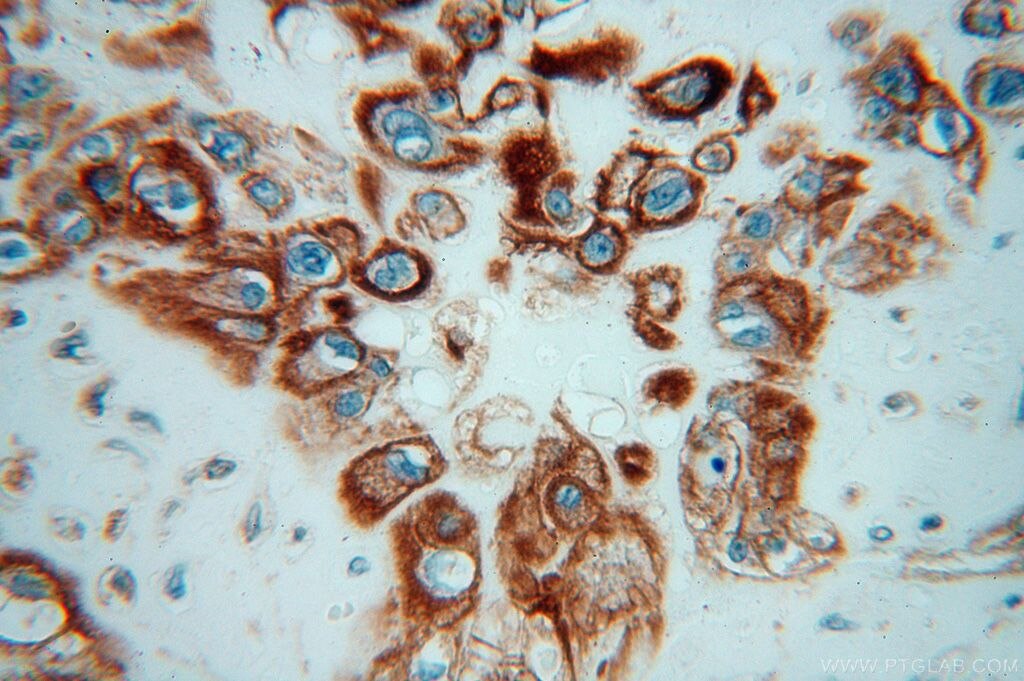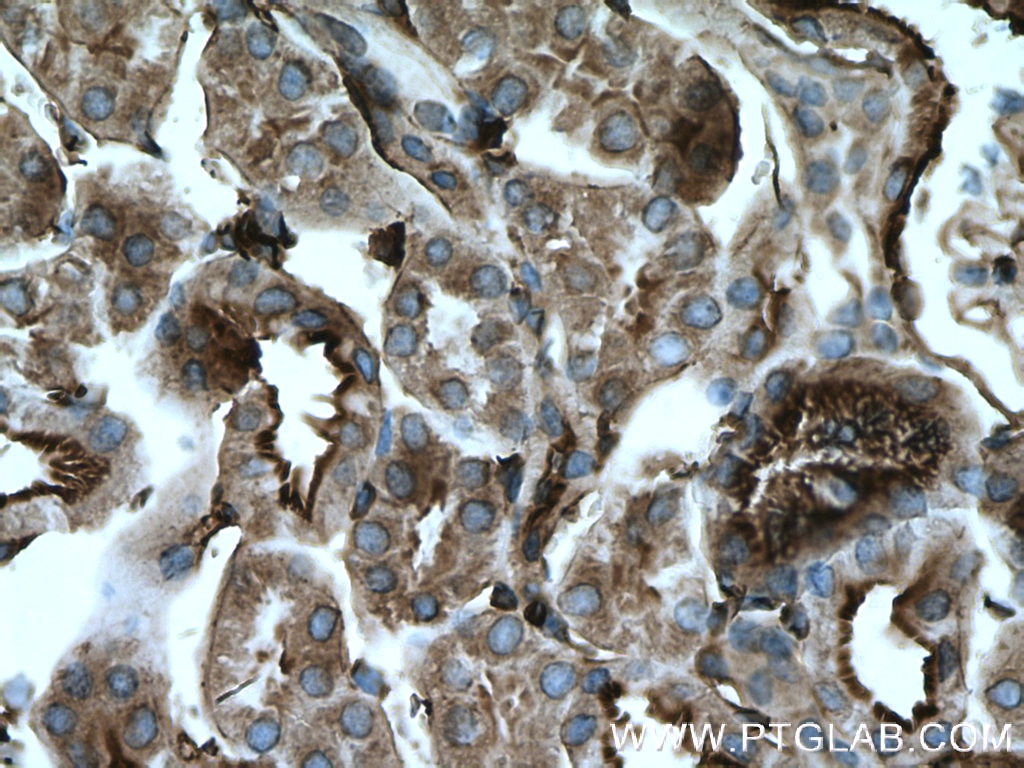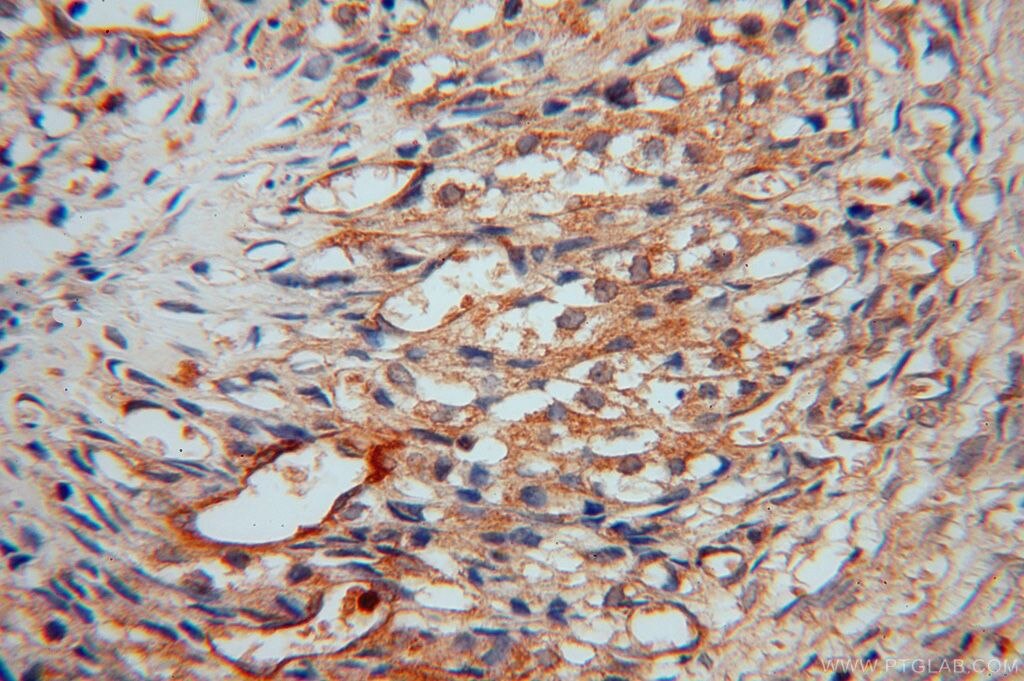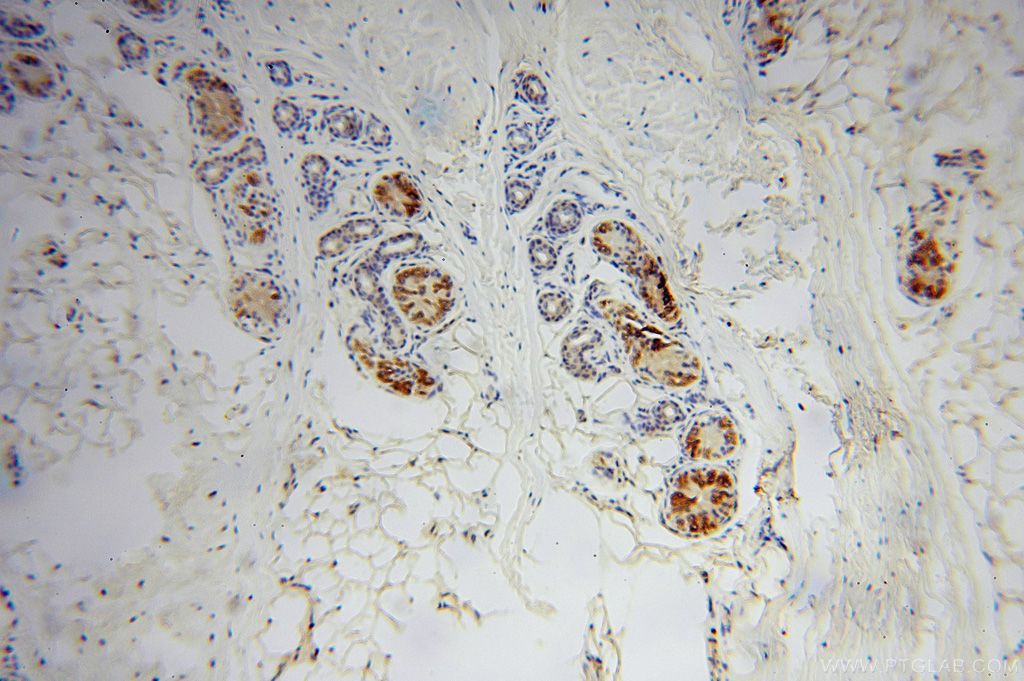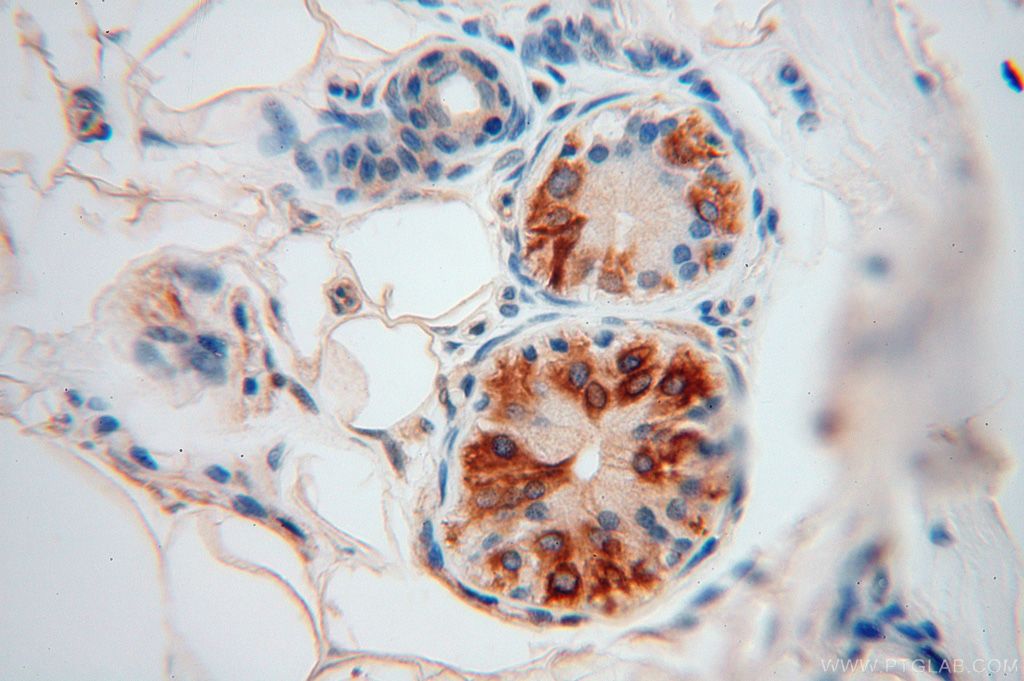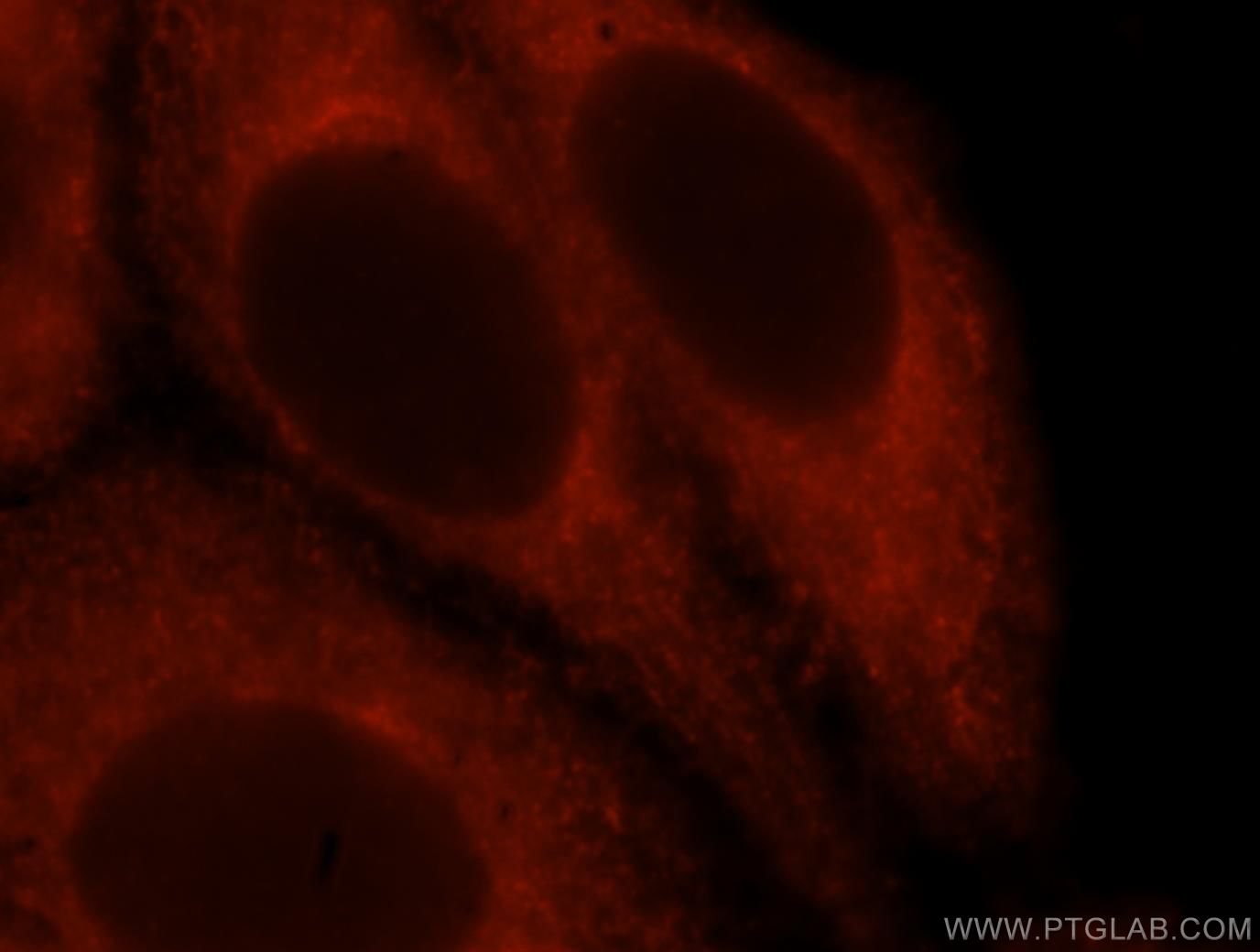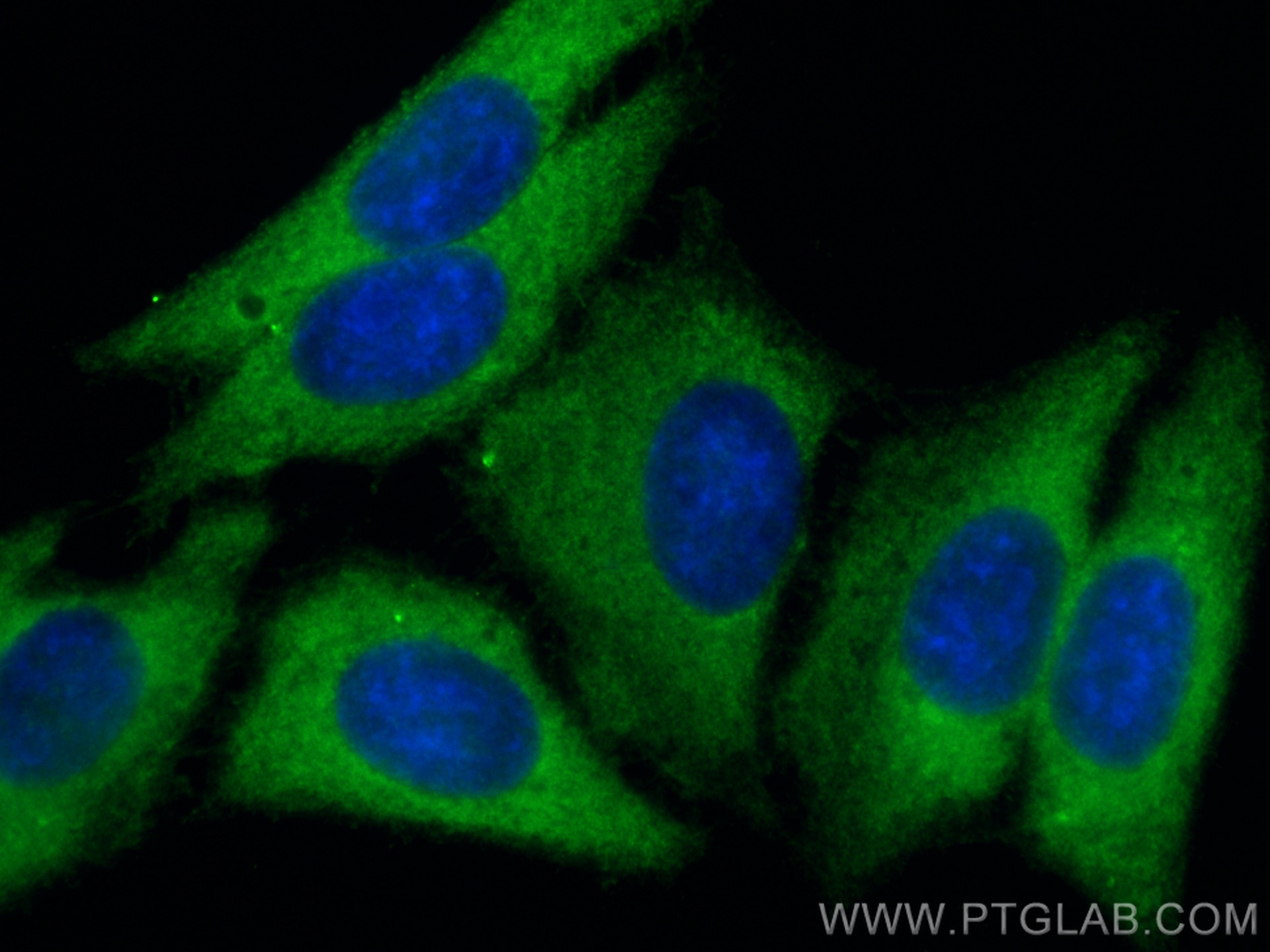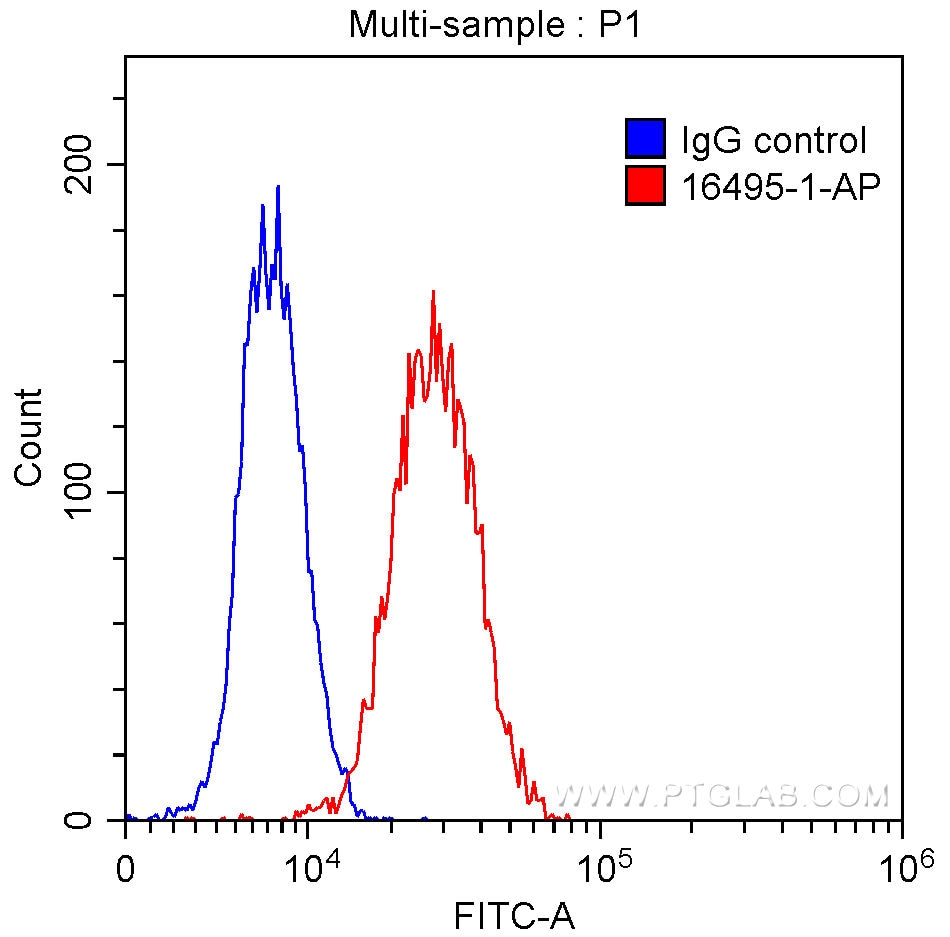- Phare
- Validé par KD/KO
Anticorps Polyclonal de lapin anti-Moesin
Moesin Polyclonal Antibody for WB, IHC, IF/ICC, FC (Intra), ELISA
Hôte / Isotype
Lapin / IgG
Réactivité testée
Humain, rat, souris
Applications
WB, IHC, IF/ICC, FC (Intra), IP, ELISA
Conjugaison
Non conjugué
N° de cat : 16495-1-AP
Synonymes
Galerie de données de validation
Applications testées
| Résultats positifs en WB | cellules BxPC-3, cellules C6, cellules HeLa, cellules Jurkat, cellules NIH/3T3, cellules Raji, cellules SGC-7901 |
| Résultats positifs en IHC | tissu rénal de souris, tissu cutané humain, tissu ovarien humain, tissu placentaire humain il est suggéré de démasquer l'antigène avec un tampon de TE buffer pH 9.0; (*) À défaut, 'le démasquage de l'antigène peut être 'effectué avec un tampon citrate pH 6,0. |
| Résultats positifs en IF/ICC | cellules HepG2, |
| Résultats positifs en FC (Intra) | cellules HepG2, |
Dilution recommandée
| Application | Dilution |
|---|---|
| Western Blot (WB) | WB : 1:5000-1:50000 |
| Immunohistochimie (IHC) | IHC : 1:150-1:600 |
| Immunofluorescence (IF)/ICC | IF/ICC : 1:50-1:500 |
| Flow Cytometry (FC) (INTRA) | FC (INTRA) : 0.20 ug per 10^6 cells in a 100 µl suspension |
| It is recommended that this reagent should be titrated in each testing system to obtain optimal results. | |
| Sample-dependent, check data in validation data gallery | |
Applications publiées
| KD/KO | See 1 publications below |
| WB | See 3 publications below |
| IHC | See 1 publications below |
| IF | See 2 publications below |
| IP | See 1 publications below |
Informations sur le produit
16495-1-AP cible Moesin dans les applications de WB, IHC, IF/ICC, FC (Intra), IP, ELISA et montre une réactivité avec des échantillons Humain, rat, souris
| Réactivité | Humain, rat, souris |
| Réactivité citée | Humain, souris |
| Hôte / Isotype | Lapin / IgG |
| Clonalité | Polyclonal |
| Type | Anticorps |
| Immunogène | Moesin Protéine recombinante Ag9623 |
| Nom complet | moesin |
| Masse moléculaire calculée | 577 aa, 68 kDa |
| Poids moléculaire observé | 68-70 kDa |
| Numéro d’acquisition GenBank | BC017293 |
| Symbole du gène | Moesin |
| Identification du gène (NCBI) | 4478 |
| Conjugaison | Non conjugué |
| Forme | Liquide |
| Méthode de purification | Purification par affinité contre l'antigène |
| Tampon de stockage | PBS avec azoture de sodium à 0,02 % et glycérol à 50 % pH 7,3 |
| Conditions de stockage | Stocker à -20°C. Stable pendant un an après l'expédition. L'aliquotage n'est pas nécessaire pour le stockage à -20oC Les 20ul contiennent 0,1% de BSA. |
Informations générales
Moesin belongs to the ezrin-radixin-moesin (ERM) family of proteins which act as cross-linkers between membrane and actin cytoskeleton. ERM proteins provide structural links to strengthen the cell cortex and facilitate several key cellular processes, including membrane dynamics, substrate adhesion, cell survival, cell adhesion, and motility. The function of ERM proteins is highly reliant on phosphorylation induced conformational changes in response to growth factor, chemokine, and antigen stimulation. This antibody may cross-react with ezrin or radixin with molecular weights around 68-70 kDa.
Protocole
| Product Specific Protocols | |
|---|---|
| WB protocol for Moesin antibody 16495-1-AP | Download protocol |
| IHC protocol for Moesin antibody 16495-1-AP | Download protocol |
| IF protocol for Moesin antibody 16495-1-AP | Download protocol |
| FC protocol for Moesin antibody 16495-1-AP | Download protocol |
| Standard Protocols | |
|---|---|
| Click here to view our Standard Protocols |
Publications
| Species | Application | Title |
|---|---|---|
Acta Neuropathol Commun The amyloid plaque proteome in early onset Alzheimer's disease and Down syndrome. | ||
Front Cell Dev Biol Ectopic Endometrial Cell-Derived Exosomal Moesin Induces Eutopic Endometrial Cell Migration, Enhances Angiogenesis and Cytosolic Inflammation in Lesions Contributes to Endometriosis Progression. | ||
Cell Rep Med Multicellular ecotypes shape progression of lung adenocarcinoma from ground-glass opacity toward advanced stages | ||
Drug Resist Updat Intercellular adhesion molecule-1 suppresses TMZ chemosensitivity in acquired TMZ-resistant gliomas by increasing assembly of ABCB1 on the membrane |
